Pheasant Hunters Trending Down in SD: Why
 Here we go again, another report about the number of bird hunters trending down. But this time it’s in a newspaper in the bird-hunting stronghold of the U.S. – South Dakota – which makes it worth comment.
Here we go again, another report about the number of bird hunters trending down. But this time it’s in a newspaper in the bird-hunting stronghold of the U.S. – South Dakota – which makes it worth comment.
An editorial in The Daily Republic newspaper wonders why the numbers are trending down. For us, the answer is the same one we always have. But first, excerpts from the worried editorial:
> According to the GF&P [DNR], 1.839 million roosters were bagged in the state last year. That estimate is the fifth-highest since 1963 and compares to the 1.648 million taken in 2009 and the 1.933 million taken in 2008.
> Pheasant populations, too, have been consistently high. There were an estimated 9.9 million pheasants in the state last year. Historic trends tell us that’s a lot of birds.
> Yet, for some reason, hunter numbers have declined in recent years, and considering the impact those hunters have on our economy, that worries us. In 2009 — the most recent year for which official numbers are posted on the GF&P website — 167,299 hunters purchased licenses to hunt pheasants in South Dakota. That was 8,781 fewer than the year before and 13,811 fewer than in 2007.
> After years of consistent increases, the number of nonresident hunters has fallen for two straight years. In 2007, that number was 103,231, but it’s dropped by about 3,000 each year since. The same goes for resident hunters: In 2005, there were 79,953 resident pheasant hunters; by 2009, the number fell to 69,949.
> Why the decreases? As far as we know, nobody has explained it. We don’t have an answer, but considering the state’s reliance on the hunting trade, we suggest those in the industry pay close attention to such trends.
Why
No one “knows” why in the scientific data-in-the-hands sense. And for the last couple of years you can definitely cite the U.S. economy, even though a disproportionate number of bird-hunters are well-heeled.
But once again, to us the answer is…enter-freakin’-tainment. If you can’t make exciting media about bird hunting, your numbers will decline along with recruitment. It’s just common sense.
Another way of saying it: If deer-hunting TV shows were cut off today cold-turkey (whoo-hooooo!), after a few years the number of deer hunters would level off and maybe start to fall.
That example too radical for you? Okay, how about just scaling back deer-hunting media to the levels of bird-hunting media – same number of TV shows, magazines, websites, DVDs, etc. – and giving them the same energy level and enthusiasm of most bird-hunting media.
(For those with sensitive knickers, that doesn’t mean we’re saying bird-hunting media is bad. We’re just shooting for apples to apples here.)
Then, on top of that, slather on a layer of uber-traditionalists who often are at the entrance gate of the sport and who actually discourage anyone from entering unless they do it “the right way” – a problem aided and abetted by the media issue.
Bang, zoom, there’s your problem.
_____
After re-reading this we’re not real sure who it’s geared toward other than those on high horses, but it’s a decent rant….
Here’s Col. Jessup:





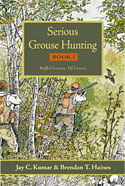

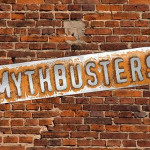
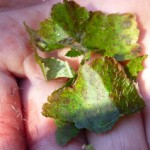
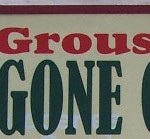
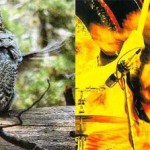
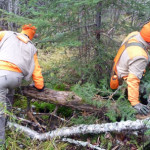
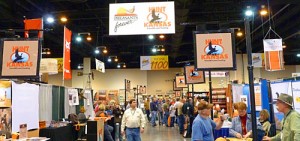
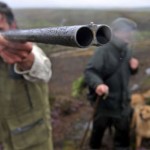
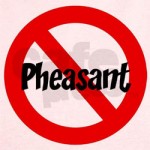
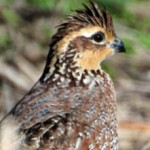
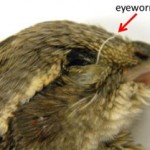
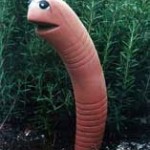
I never thought of it that way before and you may be on to something. I hunt because I like the interaction with my bird dogs. I live in a city and its a challenge getting my dogs out even for just walk. I can’t take my dogs to a park off lead. There are no places to run them wide open.
Obviously you don’t need to have a dog to kill birds but I would think for most of the hard core hunters that is a big part. The TV shows are much harder to shoot due to the nature and style of our hunting. And I think over all the audience is shrinking.
I think it all boils down to access out there. Once I was driving from South Dakota to Minneapolis to fly back home to Georgia. I stopped in a Diner Near the SD/MN state line. I saw some other bird hunters in the restaurant and asked them how they were doing. They kind of looked glum and said not to good. They said they were beating the same old tired public ground for pheasants and that it was too much pressure. They asked me where I was hunting and I told them where in South Dakota. I asked them why they didn’t go over across the line and get some there. There answer is probably one of the reasons its dropping like a rock.
“We don’t know anyone over there and it cost $300 a day per gun in lots of places.” (This was before the economy crashed) The hand shake farmer is gone and those that still exist get run over by heards of locals from town desperate to hunt in their own state. I have access to a big farm but I am asked not to knock on doors so they don’t have to return the favor when I leave.
Now compare that to Kansas that has a Million and a half acres of “Walk In Hunting Land” I have a friend that works with their dept of Parks and Wildlife and they saw 20 years ago what was happening in South Dakota and developed this program. I went opening week and it was bumper to bumper. My friend told me the program was highly successful for everyone and the locals enjoyed it. After the opening week rush was over they all enjoyed the ability to grab a gun and dog and go for a cast.
Look at Colorado they are up 200,000 Walk in Acres and they are actively managing their pheasant populations. They also have a high quality how to go hunting program. That teaches people how to use plot maps and look for cover. ( I think they addressed the issue of the gate keeper as well.)
In the end I believe it’s access. I looked at some plot maps to get off the family farm this year and public land was few and far in between. I just hunkered down and stayed on the farm.
I live in the south where there are very few birds. Only the uber rich go to highly managed and specialized plantations. Where its usually early release birds. If you want to go to a preserve its $350 for a half day with about a dozen quail then its $8 per bird. Really? What man that has been on wild birds would want to pay that?
Down here we have to read and mark days to get on public lands for the few birds that might lurk. The DNR makes sure the deer hunters get priority. Out of State Florida hunters have driven up hunting leases to $15-$20 an acre. And the farmers that realize they have quail save them for very special guest and family. Hell a dove shoot is now going for $150 on opening day in sweltering September.
So its access not just marketing. If you want to see something interesting look at the trends of bird hunters getting fed up with this and becoming avid waterfowlers. At least you can get on water.
I agree completely with the access argument. I see the subsidy program as a complete failure. It is presented to hunters as our licenses subsidising the land. however, what has happened is farmers are plowing and using every inch of that hunter subsidized land for profit off crops, and the 5 acres next to the house is perfect, “pay-to-play” bird habitat. They are double-dipping. It is discouraging enough to keep me at one place for one trip a year. I dont want to go where I pay a farmer to grow corn to the edge of the road and plow it to the ground right at the beginning of bird season. Only to entice me with a perfect habitat on “non-public” plots. I get so enticed that I ask and what is the response? $300 per gun per day. F$%^ that! The DOW needs to regulate the land they are buying and promote bird habitat. The subsidizing of these fools with hunting dollars is preposterous at best. Maybe monsanto can subsidize corn fields, but hunting dollars should subsidize habitat. Isn’t that what that word stands for. We are paying you (the farmer) as if crops were there in the hopes that a natural habitat can grow without the concern of lost profits on the land. Not the case; these farmers are tilling every bit of profit possible out from under us (hunters) and using our money to do it. It is allowing them to create private preserves, because now they can afford to keep the non-public access a bird habitat. This is a completely failed program and is discouraging the once friendly practice of farm and field hunting. This is evident in northern Colorado, Nebraska and of course, South Dakota. No one has it right and no one seems to care to do anything about it, but I’m getting tired of driving up to plowed under dirt every time I see the walk-in access sign.